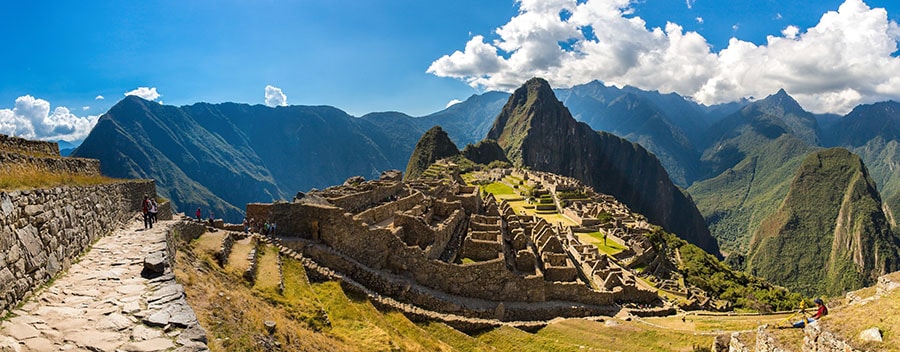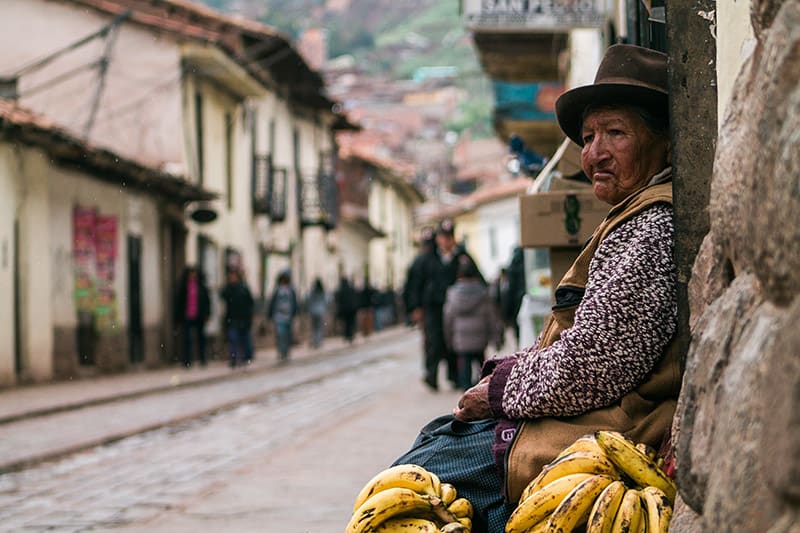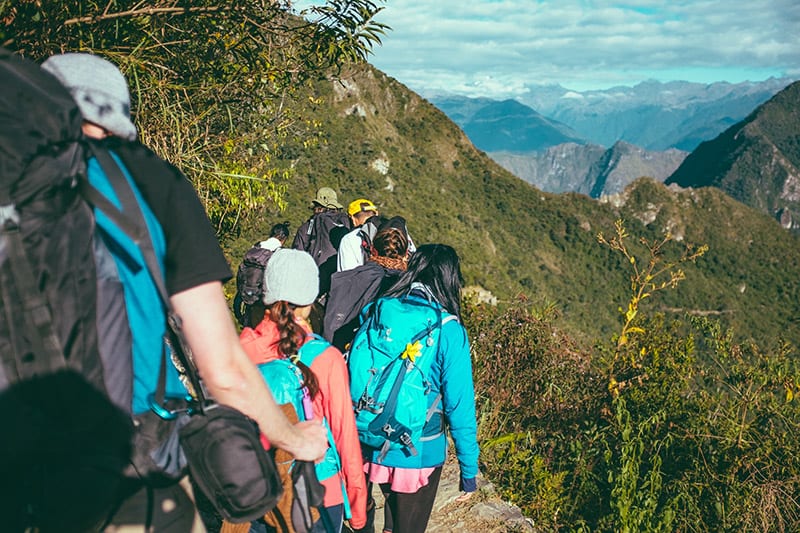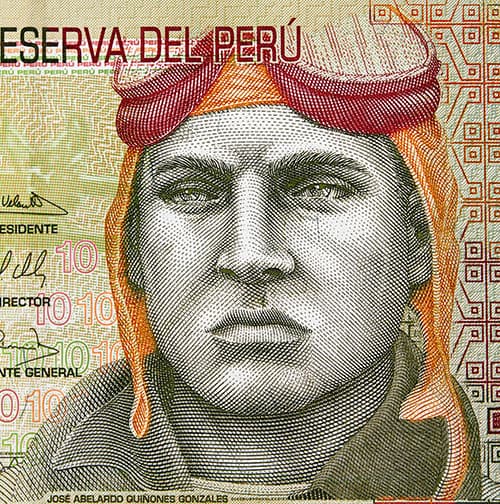
When your looking to travel to Peru, you want to go interesting, safe and a good value for your money. Going to Peru can be the trip of lifetime so its a good idea to take your time and do your homework before you ever put your money on the line.
To plan your travel to Peru, you’ll need to look into the requirements for travel to Peru, look at what to do in Peru that fits your interests, find out what the weather is like and what vaccinations you will need.
I have traveled to Peru more then a few times and I always come back with tips that will help those that follow after. Here are those tips as well other frequently asked questions that I get about traveling to Peru.
Requirements for Travel to Peru
A valid U.S. passport is required to enter and depart Peru. Tourists must also provide evidence of return or onward travel. U.S. citizens do not need a visa for a tourist stay of 90 days or less. U.S. citizens remaining in Peru more than 90 days must pay a monthly fee to extend their visa for up to three additional months, for a total of six months.
U.S. citizens, including children, who remain in Peru over six months without obtaining a residence visa will have to pay a fine in order to depart Peru.
Visitors for other than tourist or family visit purposes must obtain a Peruvian visa in advance. Business visitors should ascertain the tax and exit regulations that apply to the specific visa that they are granted.
U.S. citizens whose passports are lost or stolen in Peru must obtain a new passport and present it, together with a police report of the loss or theft, to the main immigration office in the capital city of Lima to obtain permission to depart. An airport tax of must be paid in U.S. currency when departing Peru.
There is also a small airport fee for domestic flights. For further information regarding entry requirements, travelers should contact the Peruvian Embassy by calling in the US at 1-202-462-1084 or 462-1085 or just visit them online
Is it Safe to Travel around Peru?
Of course, I am going to say yes! But I am also keeping in mind what it can be like traveling to Peru as a tourist. Visitors will probably have seen on the news, read on websites or in the newspapers about terrorism, crime and political and economic instability in Peru in recent years.
But we also know that several years ago Peru managed to put down terrorism, and today the country is at peace. The country is now working hard to build a stable democracy. All travelers have to do is to take the same normal precautions as when traveling to any tourist destination.
When In The Major Cities of Peru
- Take the normal precautions to guard against purse snatchers.
- Carry a copy of identification documents. Keep originals and your valuables in the safety deposit box of your hotel.
- Carry valuables discreetly.
- Do not carry large amounts of cash. Keep an eye on your bags and luggage.
- Do not exchange money out in the street.
- It is recommended to use taxis ( call yourself or if you Spanish is not good, have your hotel call) or those allowed by municipalities (in Lima they are painted yellow and have a bright cap on the roof).
Peru Frequently Asked Questions
Can we rent a car in Peru and drive everywhere?
I can’t say I recommend that you rent a car in Peru due the difficulty involved in driving from city to city. For example, the drive from Lima to Cuzco will take you about 27 hours. In addition, the roads are not clearly marked and can be confusing.
When I get to Lima airport and I have a connecting flight to Cuzco that same day, will your representative will be there to guide me and give me my vouchers and documents?
If you have a connecting flight is with a wait time of more than 3 hours then they will be waiting for you at the International Airport exit with a sign with your name on it.
Always carry your driver’s license, a copy of your passport and if the vehicle is rented, the rental contract. International driver’s licenses are valid in Peru for a year, while a license from country of origin is valid for 30 days. If a traffic cop signals you to stop, do so.
He must be wearing a proper uniform and his ID (his last name must appear on a badge over his chest). Police may not enter your vehicle. Bear in mind that neither your documents nor your vehicle may be taken, and under no circumstance give money. In case of an accident or a crash, call a traffic policeman.
If the vehicle is rented, also call a representative of the insurance company at the car rental company. Wait at the site. Keep windows closed and doors locked.
What Are The Best Festivals In Peru?

Its hard for me to tell someone what is the best festival to see in Peru as they are all great, just different. All the festivals are some sort of blend of colors with lots of sounds and with a basic theatrical concept with the goal of reinventing Peruvian history.
Its interesting to note that Peru celebrates some 3,000 festivals a year and most of them are held in homage to a patron saint and are part of the Christian calendar adopted in colonial times, although in today’s festivals they are blended with the magical beliefs of ancient forms of worship.
There really amazing to see and photograph no matter which one you happen to go to..
Here is a list of the top festivals in Peru:
| Month | Peru Festivals |
| January | Trujillo Marinera Festival |
| February | Fiesta de la Candelaria. |
| March | Festival Internacional de la Vendimia. |
| April | Festividad del Señor del los Temblores del Cusco. |
| May | Fiesta de las Cruces. |
| June | Inti Raymi. |
| July | Fiesta de la Virgen del Carmen |
| August | Día de Santa Rosa de Lima |
| September | Mistura Culinary Festival |
| October | Procesión del Señor de los Milagros |
| November | Puno Week |
| December | Santuranticuy |
What is the Weather like in Peru?
Peru is a vast country split from north to south by the Andes, and is covered by the Amazon jungle to the east. Temperatures can vary from one city to another, depending on the time of year.
It almost never rains on the Peruvian coast, and in general, there are two marked seasons: hot and cold. The hot season runs from around mid-November to end-March. The cold weather generally lasts from late April to mid-November, with high humidity.
In the highlands and the jungle, unlike the coast, the rain season is the warmest time of year, lasting from mid-November to end-March. Temperatures are cooler from April to mid-November.
Peru is a varied and diverse country due to the climatic, natural and cultural diversity of its regions. It is 1,554 miles (2,500 km) long, and has 3 natural regions: Coast, Mountains ( sierra ) and Jungle.
Remember that Peru’s seasons are the reverse of those in the northern hemisphere. This means that Summer in Peru is from December to February and winter from July to September.
I don’t think there is ever a bad time to visit Peru, however as a very general recommendation the best time to visit the coast is during the summer (Dec-Feb) and the best time to visit the mountains is in the winter (Jul-Sept).
Of course, if you are going to the jungle it is hot and steamy all year round with heavy rains in December and January. Here is some more specific information:
Travel to The Mountains of Peru (Machu Picchu, Cusco, Puno, Titicaca Lake) Cusco Peru
Mid April – October: This period is the dry season, with hot, dry days (20-25°C) and cold, dry nights, often hovering just above freezing, particularly in June and July. May is perhaps the best month with the countryside exceptionally lush, yet with superb views and fine weather.
You’ll find the flowers in full bloom, the grass green and the streams full. Peru’s peak season is from June to September. You’ll find Cusco a pretty cosmopolitan city with tourists from all over the globe converging on Machu Picchu.
The famous pageant of Inti Raymi, the Inca festival of the winter solstice (24 June) draws thousands of visitors to Cusco, so its best to arrive early or make hotel reservations in advance.
November – Mid April: This is the wet season with most rain in January and February. It’s usually clear and dry most mornings with outbursts of heavy rain in the afternoons.
The daily temperatures are typically 18°C with only a small drop at night, 15°C. The Inca Trail is much less crowded during this period and there’s a more abundant fresh water supply, but of course be well equipped for the rain.
You’ll also find some roads may become impassable particularly when trying to visit villages off the beaten track. Many of Peru’s major festivals such as Carnival and Easter Week take place during this period.
Travel to The Peruvian Coast:( Lima, Trujillo, Nazca )
December – April : his is summertime on the coast where the weather is hot and dry and ideal for swimming and getting a tan. Temperatures on average range from 25 – 35°C.
May – November : From May to November the temperature drops a bit and you’ll find blankets of sea mist engulfing the coast from the south right up to about 200 km north of Lima. At this time of year only the northern beaches near Tumbes are warm enough to provide pleasant swimming.
Travel to The Jungles of Peru: ( Puerto Maldonado , Iquitos )
April – October This is the ‘dry’ season with daily temperatures averaging 30-35°C. However cold fronts from the South Atlantic are common when the temperatures can drop to 15°C during the day and 13°C at night.
The dry season is the best time to visit the jungle regions … there are fewer mosquitoes and the rivers are low, exposing the beaches. It’s also a good time to see nesting and to view the animals at close range, as they stay close to the rivers and are more easily seen.
November – March This is the wet season, hot and humid, when you can expect heavy rain at anytime. It only rains for a few hours at a time, so it’s not enough to spoil your trip. Wellington boots are a must though, as some of the jungle trails can become small rivers.
Immunizations Medications and Hygiene

Assuming that you are not going into the Amazon tributaries, the altitudes experienced in the Andes may have an adverse effect on you if you are not used to such heights. A visit to your physician prior to coming to Perú is recommended.
Diamox is a good medication for altitude sickness. You may also want to discuss with your physician other medications such as antibiotics to take along with you as well as the following immunizations:
- Typhoid
- Polio
- Tetanus
- Hepatitis A
One recommendation for visitors is to drink bottled water only even for things such as brushing your teeth. One observation regarding Perú is the unavailability of toilet paper in almost all public places.
Major hotels and most restaurants will have some, but do not be surprised to go into a public bathroom, such as at Machu Picchu, and find that toilet paper is either unavailable or available only for sale.
Bring an ample amount of tissues that you can take around with you on your journeys. If you are going into the Amazon tributaries, it is recommended that you let your physician know beforehand. A current yellow fever vaccination is a must ( you will be required to show it to the Health Ministry representatives), also anti malarial medications should be discussed. And bring plenty of D.E.E.T. with you.
If you are overly concerned you may want to call your State Board of Health for recommendations on medications for the Amazon.
Altitude Sickness in Peru
On reaching heights above 3000m, heart pounding and shortness of breath are a normal response to the lack of oxygen in the air. However, for some visitors these symptoms can deteriorate into a conditions known as Soroche (or acute mountain sickness) when you can start to experience headaches, loss of appetite, extreme tiredness, sleeplessness and often nausea. Symptoms usually develop within the first day at altitude, but may be delayed by up to 2 weeks.
To prevent “Soroche”, try to take things easy as soon as you arrive. Once settled in your hotel room have a lie down for a while and drink plenty of fluids. Don’t plan any strenuous treks until you’ve acclimatized for a few days. Avoid alcohol, cigarettes and heavy food. Drinking mate de coca (an infusion of coca leaves – and perfectly legal in Peru ) may help.
If symptoms become more severe and prolonged it is best to quickly seek medical attention and make arrangements to descend to a lower altitude. On recovery one can re-ascend slowly or in stages.
Hiking the Inka Trail
The Inca Trail, the most popular by FAR hike in Peru, goes through the Machu Picchu Historical Sanctuary, which forms the transition zone between the Andes and the Amazon.
The Sanctuary’s extraordinary altitudinal range, from 20,568 feet ( no that is not a typo) above sea level at Salkantay to 5658 feet in the Aobamba valley means that it comprises ten distinct life zones, from glaciers to cloud forest – home to fascinating Inca ruins, 423 species of birds and more than 300 types of orchids.
So basically you see a ton and if you have the time and the inclination is a must do for any trip to Peru
Frequently Asked Question on About Trekking In Peru
When is the best time to go?
The Inca Trail is always an amazing trip but if I were to choose a time I would recommend going between May and September, especially if you have never trekked before. I cannot think many worse things then trekking the Inca Trail during the rainy season if you are new to hiking.
How many days is it?
There are a variety of different hikes that you can do however, although it does get “crowded, for the first timer, I always recommend the classic which is a 4 day hike that starts in Cusco and ends at the Sun Gate which is the entrance in Machu Pichu
How many are in the group going on the Classic Inca Trek usually?
The ratio is usually for every 9-10 people there is one guide. A large group can be up to 30 people but they will be divided into 3 groups each with their own guide.
Recommended Items for your Trek: I have included links to Amazon
- Personal sleeping bag and mattress
- Trekking Sandals for him or her
- Thin and thick socks (I always wear a thin sock and then over it a hiking sock, both cotton and both pre-worn)
- Warm and weatherproof clothes (like 2 synthetic underwear/shirt for him or her, skiing shirt, a sweater and a Goretex Jacket for him or her)
- Backpack -Comfortable with hip belt and rainproof cover.
- Trekking Boots (and I mean boots)
- Water bottle
- Headlamp
- Insect repellent
- Personal Water Filter
- First Aid Kit
- Leatherman or Swiss Army Knife
- Camera – I like to go with a mirrorless
- Sun Glasses for him and her
- Hiking Hat
- Sun Screen
Everything you don’t need should be left behind. Many hostels and hotels in Cuzco will let you leave stuff with them at no extra charge.
Do they provide tents?
Yes they do.
Can we do the Inca Trek just the two of us?
Yes you can however that will be considered a private tour and therefore will be more expensive.
Conclusion
Peru is a vast and incredibly diverse country. You can from the arid coastal desert along the Pacific to the high Andean mountains, and to Amazonian tropical forests extending into Brazil and never stop being amazed. Its a country you will want to visit again and again as there so much to see and do.
Therefore, weather you are going on your first trip to Peru or your 10th, I hope you found this information useful and that it helps you have a great trip!

